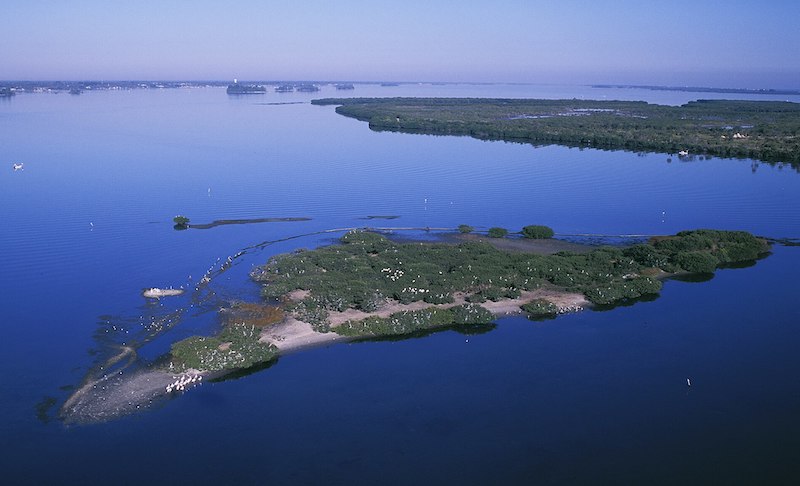Spread the love
By the late 1800s Florida’s wildlife populations, specifically birds, were dwindling due to over-hunting for plumes

FLORIDA HISTORICAL SOCIETY – The Pelican Island National Wildlife Refuge on the Indian River Lagoon in East Central Florida became the first national wildlife refuge in March 1903.
America’s first National Wildlife Refuge is located near the Atlantic coastal community of Sebastian, Florida. A little island in the Indian River Lagoon, a dot on the map really, but with a very large international footprint.
Pelican Island, and its surrounding 5400+ acres of protected waters and lands, are known as the Pelican Island National Wildlife Refuge.
By the late 1800s Florida’s wildlife populations, specifically birds, were dwindling due to over-hunting for plumes.
Pelican Island, a small three-acre mangrove island, hosted thousands of brown pelicans, spoonbills and other waterfowl that utilized the island as a rookery for their young.
In 1881 a German immigrant named Paul Kroegel moved to the Sebastian River area, noticed the unique assemblage of birds, and decided to protect the island himself.
Many famous naturalists, including Frank Chapman, visited Kroegel and they appealed to President Theodore Roosevelt on Kroegel’s behalf.
Roosevelt signed the executive order making Pelican Island the first federal bird reserve, the forerunner to the national wildlife refuge system.
Kroegel was hired as the first national wildlife refuge manager until 1926. He was paid $1 per month by the Audubon Society, as Congress had not made financial provisions for the refuge.
Pelican Island National Wildlife Refuge holds hundreds of species of animals including birds, fish, plants, and mammals. The wetlands of Pelican Island are a major ecological system supporting the huge biological diversity.
Fifteen federally listed threatened and endangered species live in Pelican Island NWR and around Indian River Lagoon. Of the endangered species, West Indian manatees and sea turtles occupy parts of the lagoon. Around the lagoon in the refuge are two wood stork refuges.
These birds along with other wading birds that nest on the island thrive on the tremendous fish population.
Pelican Island is home to many nesting birds including brown pelicans, great egrets, snowy egrets, reddish egrets, great blue heron, little blue heron, tricolored heron, black-crowned night heron, American white ibis, glossy ibis, double-crested cormorant, anhinga, and American oystercatcher.

Pelican Island National Wildlife Refuge holds hundreds of species of animals including birds, fish, plants, and mammals. The wetlands of Pelican Island are a major ecological system supporting the huge biological diversity. Fifteen federally listed threatened and endangered species live in Pelican Island NWR and around Indian River Lagoon. Of the endangered species, West Indian manatees and sea turtles occupy parts of the lagoon.
Around the lagoon in the refuge are two wood stork refuges. These birds along with other wading birds that nest on the island thrive on the tremendous fish population. Pelican Island is home to many nesting birds including brown pelicans, great egrets, snowy egrets, reddish egrets, great blue heron, little blue heron, tricolored heron, black-crowned night heron, American white ibis, glossy ibis, double-crested cormorant, anhinga, and American oystercatcher.
Pelican Island is administered as part of the 8,000 acres Everglades Headwaters NWR complex along with Archie Carr NWR, Lake Wales Ridge NWR, and the Everglades Headwaters NWR and Conservation Area, created in 2012 (556th unit of the National Wildlife Refuge System) with a 10 acres donation and other lands covering approximately 150,000 acres north of Lake Okeechobee.
100,000 acres will be held under “conservation easement”s through the U.S. Department of the Interior and the U.S. Fish and Wildlife Service. This allows landowners the right to retain ownership of the land, with the ability to continue farming or ranching, ensuring that the land can’t be subdivided or developed.
Pelican Island NWR has been placed on the List of Ramsar wetlands of international importance along with other areas of wetlands in the United States.
CLICK HERE FOR BREVARD COUNTY NEWS

